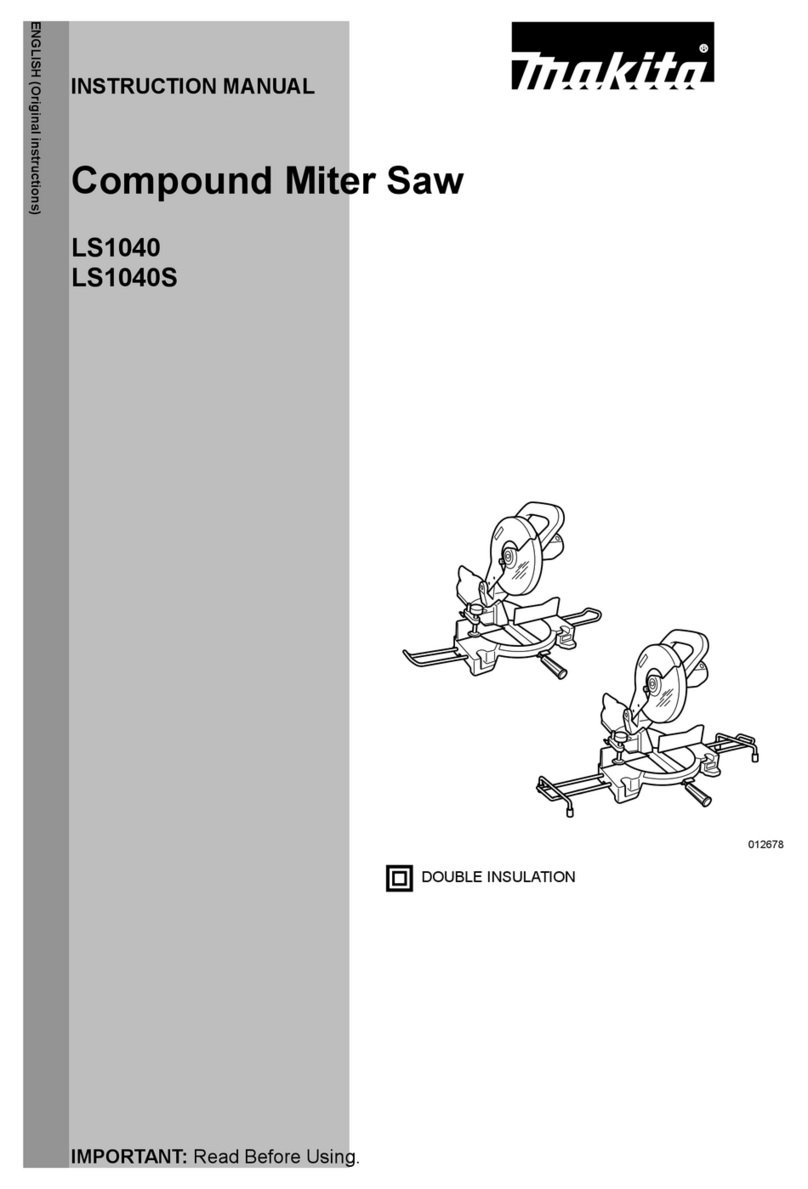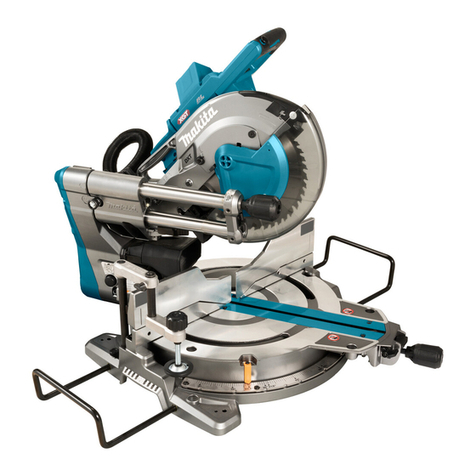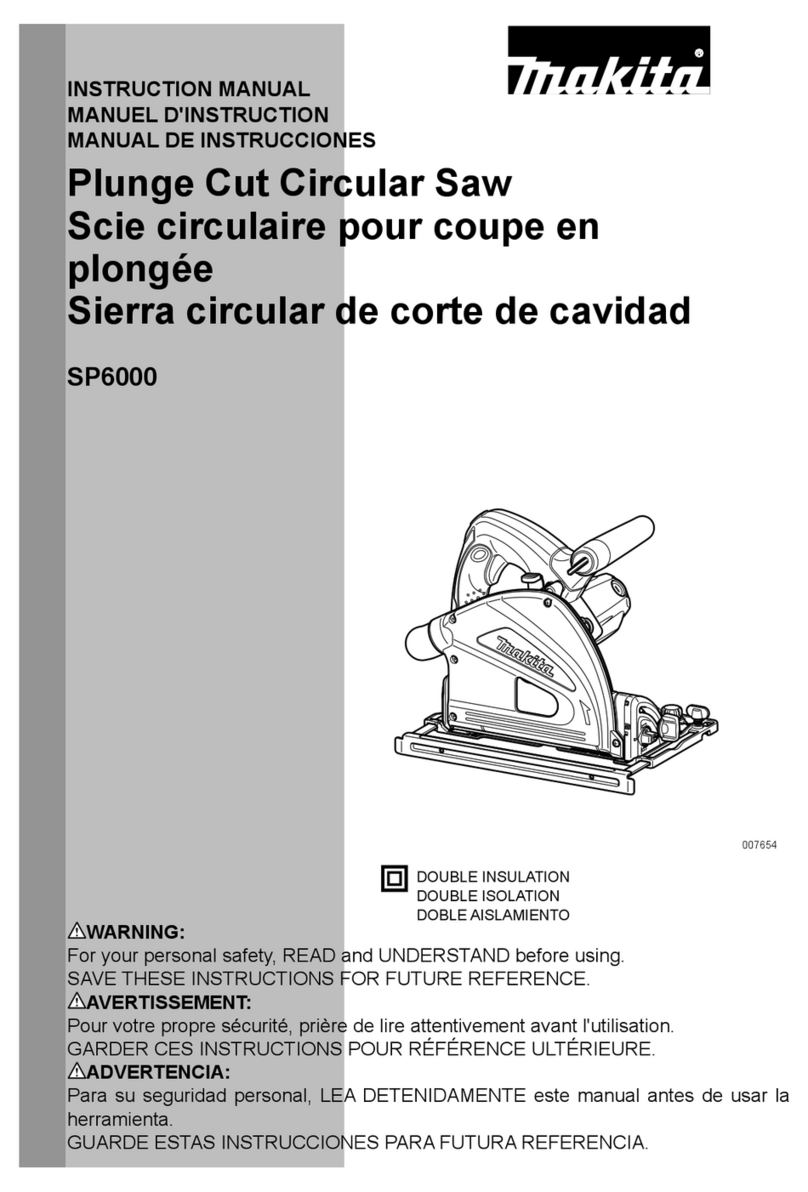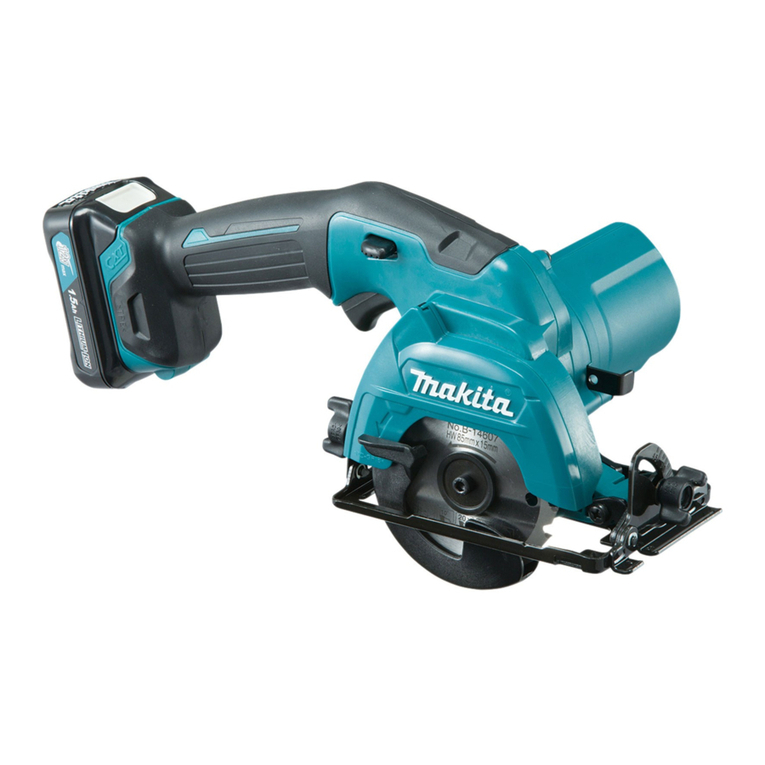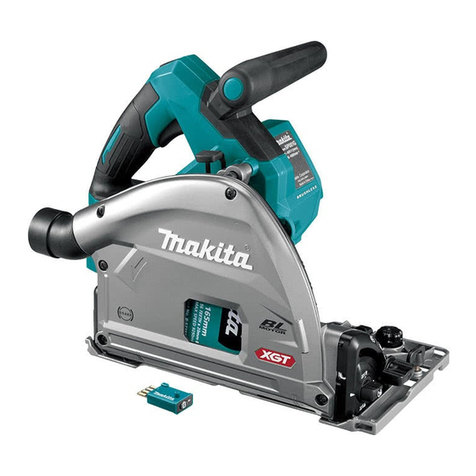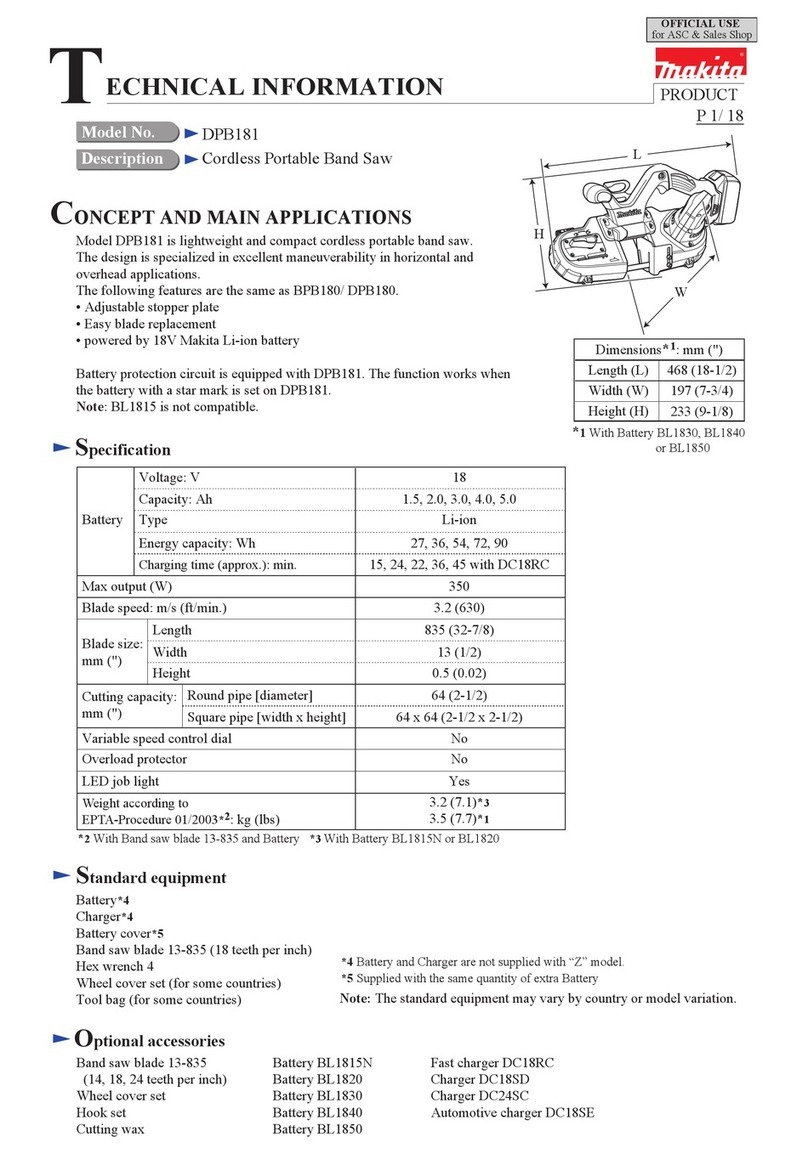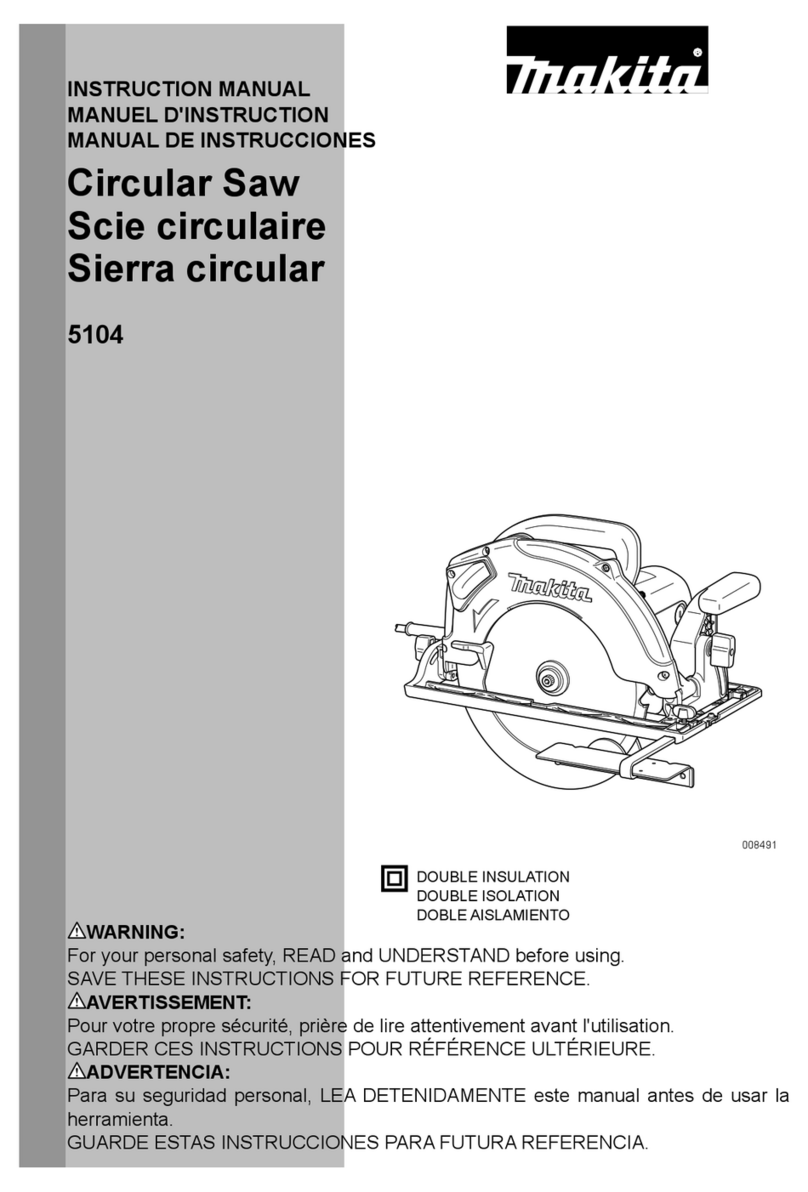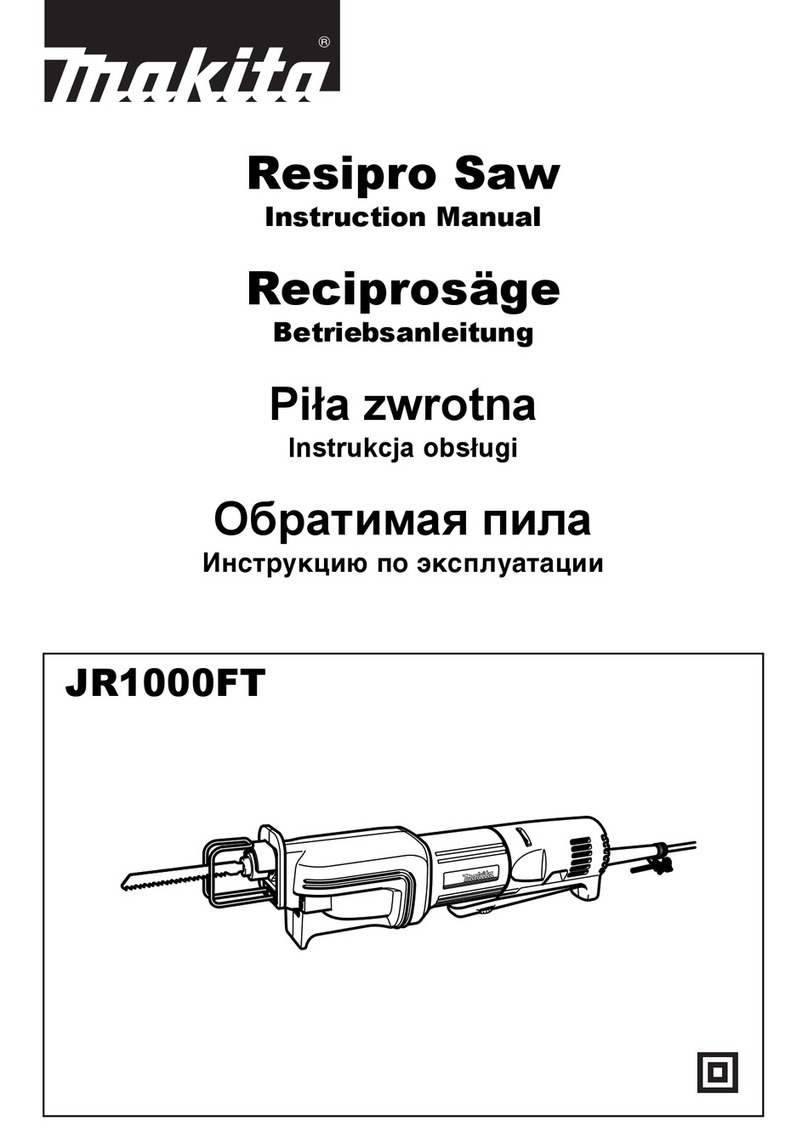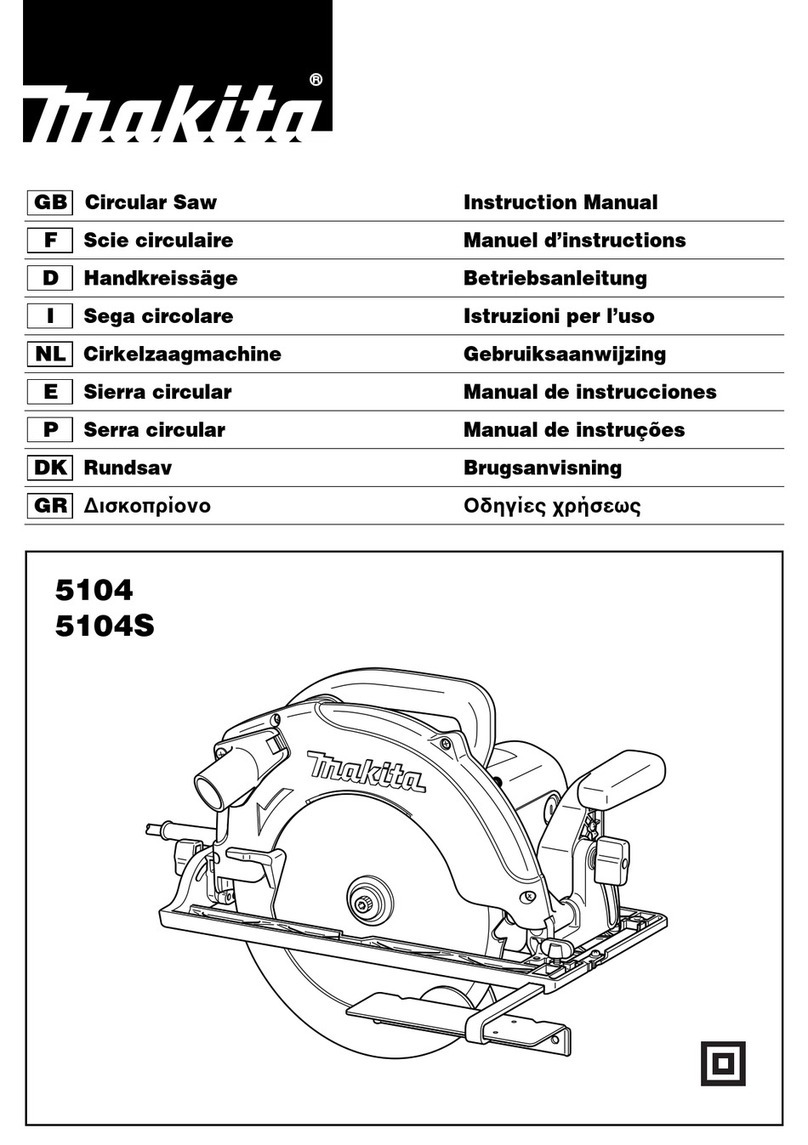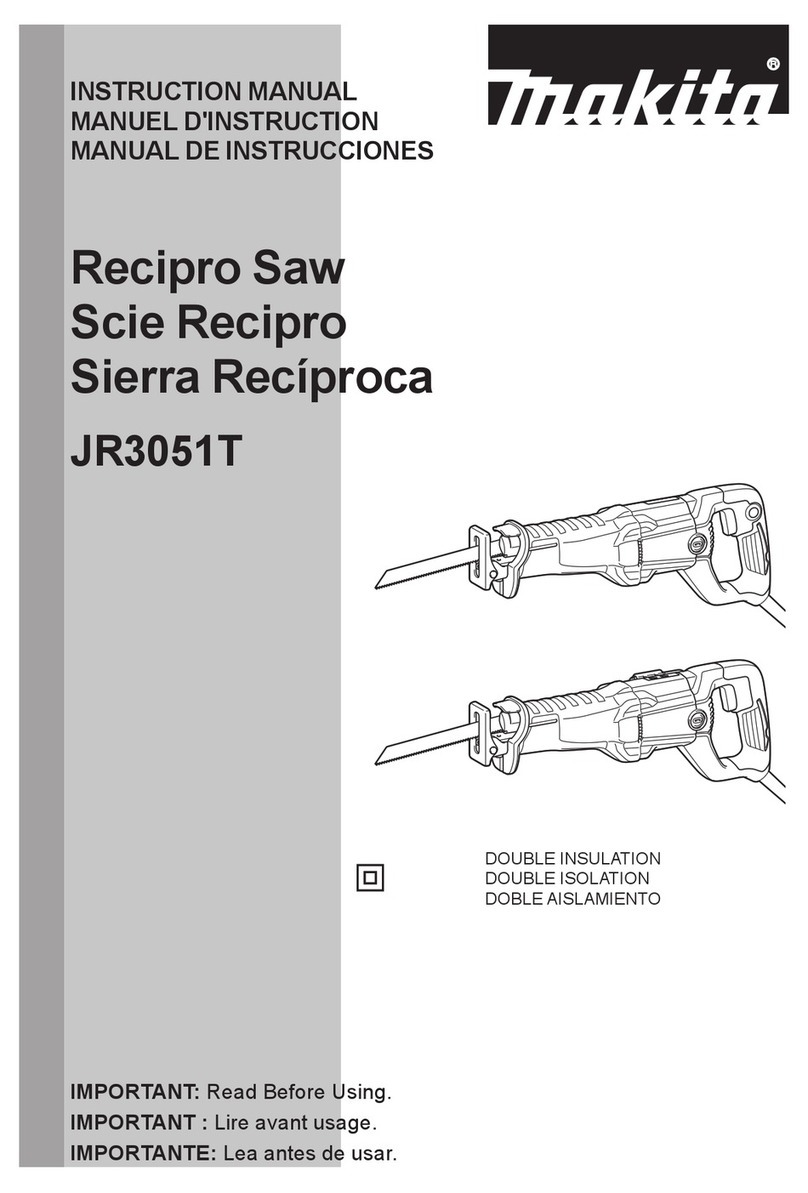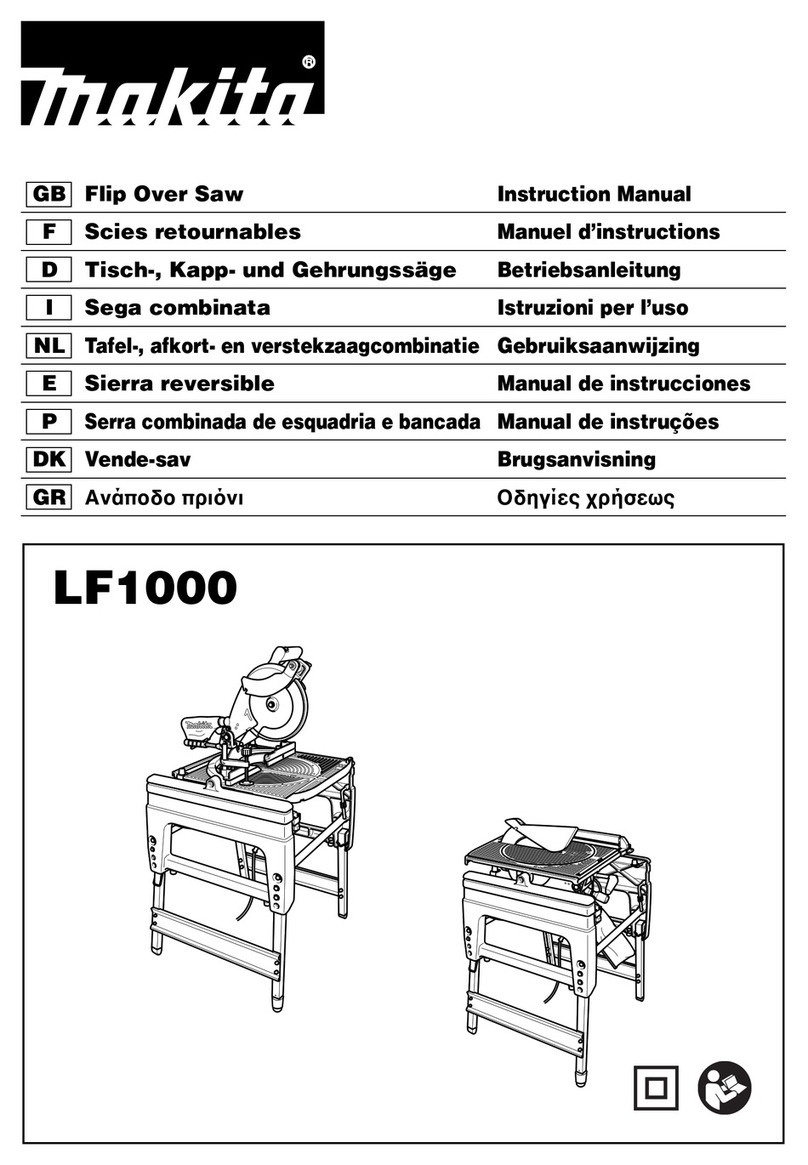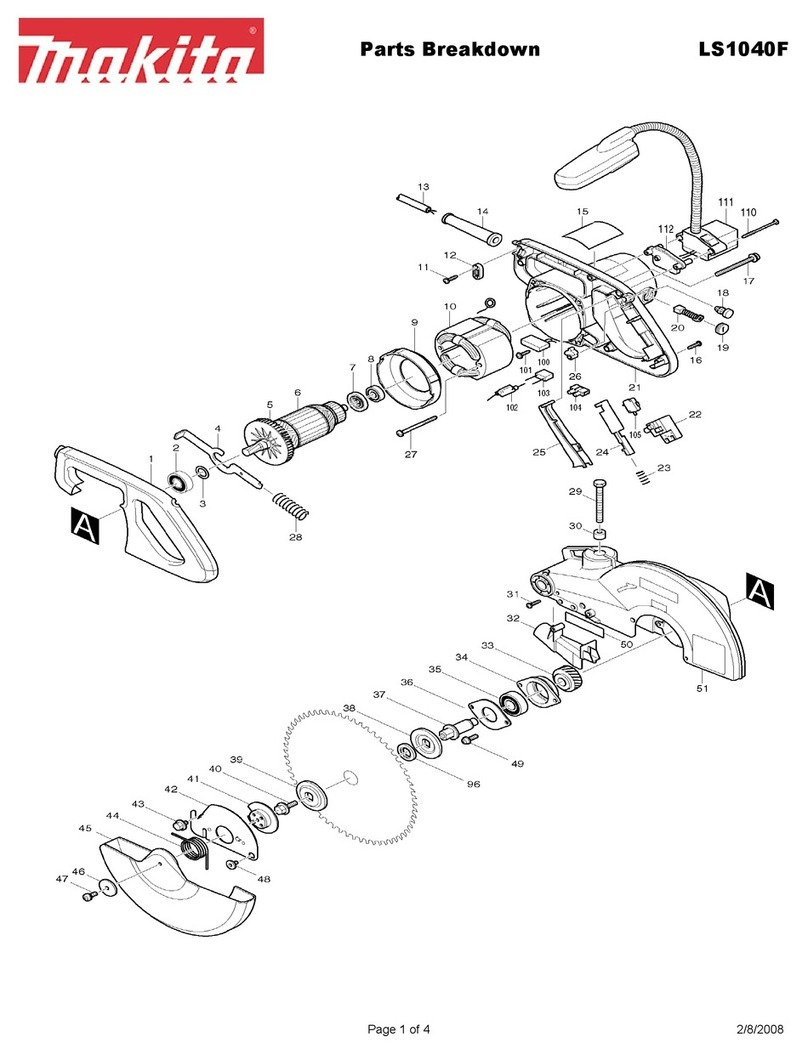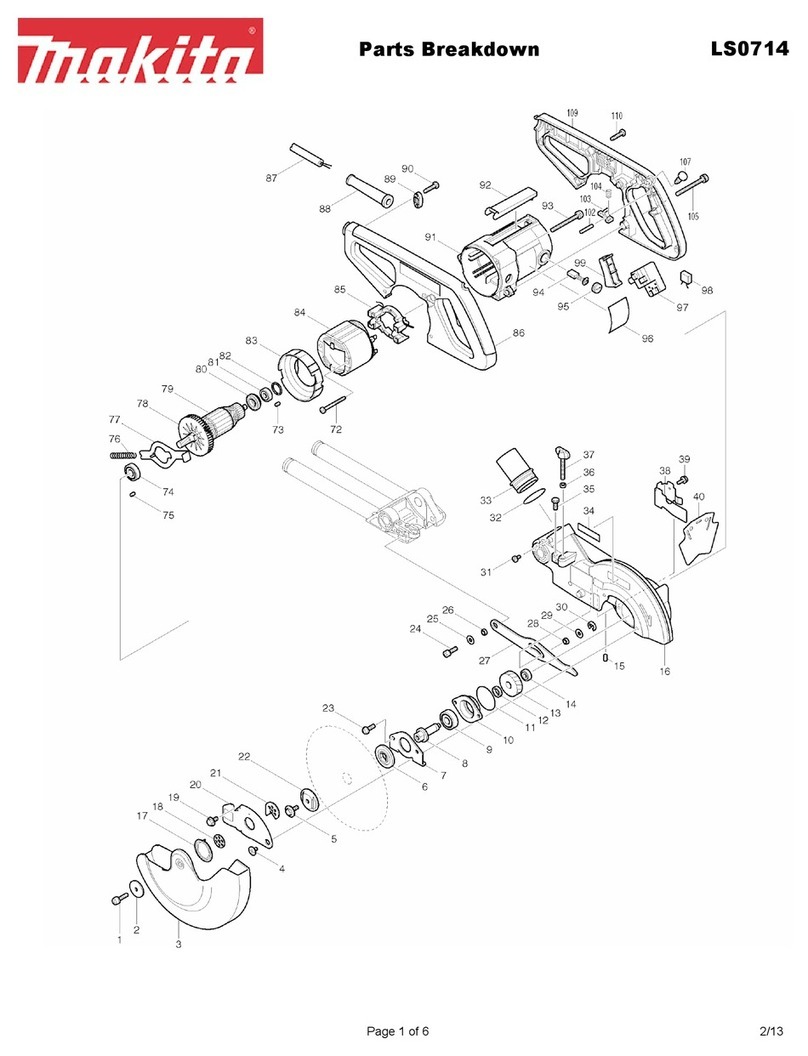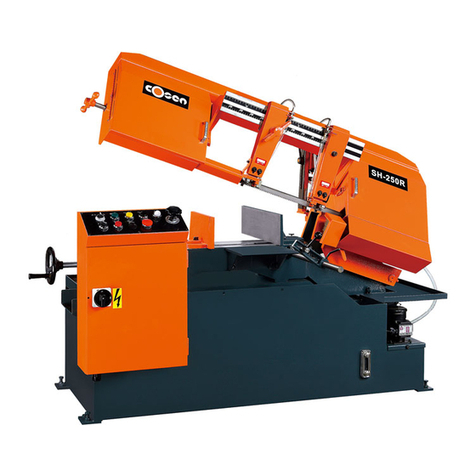7ENGLISH
Circular saw safety warnings
Cutting procedures
1.
DANGER: Keep hands away from cutting area
and the blade. Keep your second hand on auxil-
iary handle, or motor housing.Ifbothhandsare
holdingthesaw,theycannotbecutbytheblade.
2.
Do not reach underneath the workpiece.Theguard
cannotprotectyoufromthebladebelowtheworkpiece.
3. Adjust the cutting depth to the thickness of
the workpiece.Lessthanafulltoothoftheblade
teethshouldbevisiblebelowtheworkpiece.
4. Never hold the workpiece in your hands or
across your leg while cutting. Secure the
workpiece to a stable platform. It is important to
supporttheworkproperlytominimisebodyexpo-
sure,bladebinding,orlossofcontrol.
►Fig.1
5. Hold the power tool by insulated gripping
surfaces, when performing an operation where
the cutting tool may contact hidden wiring or
its own cord.Contactwitha"live"wirewillalso
makeexposedmetalpartsofthepowertool"live"
and could give the operator an electric shock.
6. When ripping, always use a rip fence or
straight edge guide.Thisimprovestheaccuracy
ofcutandreducesthechanceofbladebinding.
7.
Always use blades with correct size and shape
(diamond versus round) of arbour holes. Blades
that do not match the mounting hardware of the saw
will run off-centre, causing loss of control.
8. Never use damaged or incorrect blade wash-
ers or bolt.Thebladewashersandboltwere
specially designed for your saw, for optimum
performance and safety of operation.
Kickback causes and related warnings
— kickbackisasuddenreactiontoapinched,
jammedormisalignedsawblade,causingan
uncontrolled saw to lift up and out of the workpiece
toward the operator;
—
whenthebladeispinchedorjammedtightlybythe
kerfclosingdown,thebladestallsandthemotorreac-
tiondrivestheunitrapidlybacktowardtheoperator;
—
ifthebladebecomestwistedormisalignedinthecut,
theteethatthebackedgeofthebladecandiginto
thetopsurfaceofthewoodcausingthebladetoclimb
outofthekerfandjumpbacktowardtheoperator.
Kickbackistheresultofsawmisuseand/orincorrect
operatingproceduresorconditionsandcanbeavoided
bytakingproperprecautionsasgivenbelow.
1.
Maintain a rm grip with both hands on the saw
and position your arms to resist kickback forces.
Position your body to either side of the blade, but
not in line with the blade.Kickbackcouldcausethe
sawtojumpbackwards,butkickbackforcescanbecon-
trolledbytheoperator,ifproperprecautionsaretaken.
2.
When blade is binding, or when interrupting a
cut for any reason, release the trigger and hold
the saw motionless in the material until the
blade comes to a complete stop. Never attempt
to remove the saw from the work or pull the
saw backward while the blade is in motion or
kickback may occur. Investigate and take correc-
tiveactionstoeliminatethecauseofbladebinding.
3. When restarting a saw in the workpiece, centre
the saw blade in the kerf so that the saw teeth
are not engaged into the material.Ifasawblade
binds,itmaywalkuporkickbackfromthework-
piece as the saw is restarted.
4. Support large panels to minimise the risk of
blade pinching and kickback. Large panels tend
tosagundertheirownweight.Supportsmustbe
placedunderthepanelonbothsides,neartheline
of cut and near the edge of the panel.
►Fig.2
►Fig.3
5. Do not use dull or damaged blades.
Unsharpenedorimproperlysetbladesproduce
narrowkerfcausingexcessivefriction,blade
bindingandkickback.
6. Blade depth and bevel adjusting locking levers
must be tight and secure before making the
cut.Ifbladeadjustmentshiftswhilecutting,itmay
causebindingandkickback.
7. Use extra caution when sawing into existing
walls or other blind areas.Theprotrudingblade
maycutobjectsthatcancausekickback.
8. ALWAYS hold the tool rmly with both hands.
NEVER place your hand, leg or any part of your
body under the tool base or behind the saw,
especially when making cross-cuts.Ifkickback
occurs,thesawcouldeasilyjumpbackwardsover
yourhand,leadingtoseriouspersonalinjury.
►Fig.4
9. Never force the saw. Push the saw forward at a
speed so that the blade cuts without slowing.
Forcing the saw can cause uneven cuts, loss of
accuracy,andpossiblekickback.
Guard function
1. Check the guard for proper closing before
each use. Do not operate the saw if the guard
does not move freely and enclose the blade
instantly. Never clamp or tie the guard so that
the blade is exposed. If the saw is accidentally
dropped,theguardmaybebent.Checktomake
sure that guard moves freely and does not touch
thebladeoranyotherpart,inallanglesand
depths of cut.
2. Check the operation and condition of the
guard return spring. If the guard and the spring
are not operating properly, they must be ser-
viced before use.Theguardmayoperateslug-
gishly due to damaged parts, gummy deposits, or
abuild-upofdebris.
3. Assure that the base plate of the saw will not
shift while performing a “plunge cut” when the
blade bevel setting is not at 90 °. Blade shifting
sidewayswillcausebindingandlikelykickback.
4. Always observe that the guard is covering the
blade before placing the saw down on bench
or oor.Anunprotected,coastingbladewillcause
thesawtowalkbackwards,cuttingwhateverisin
itspath.Beawareofthetimeittakesfortheblade
to stop after switch is released.



